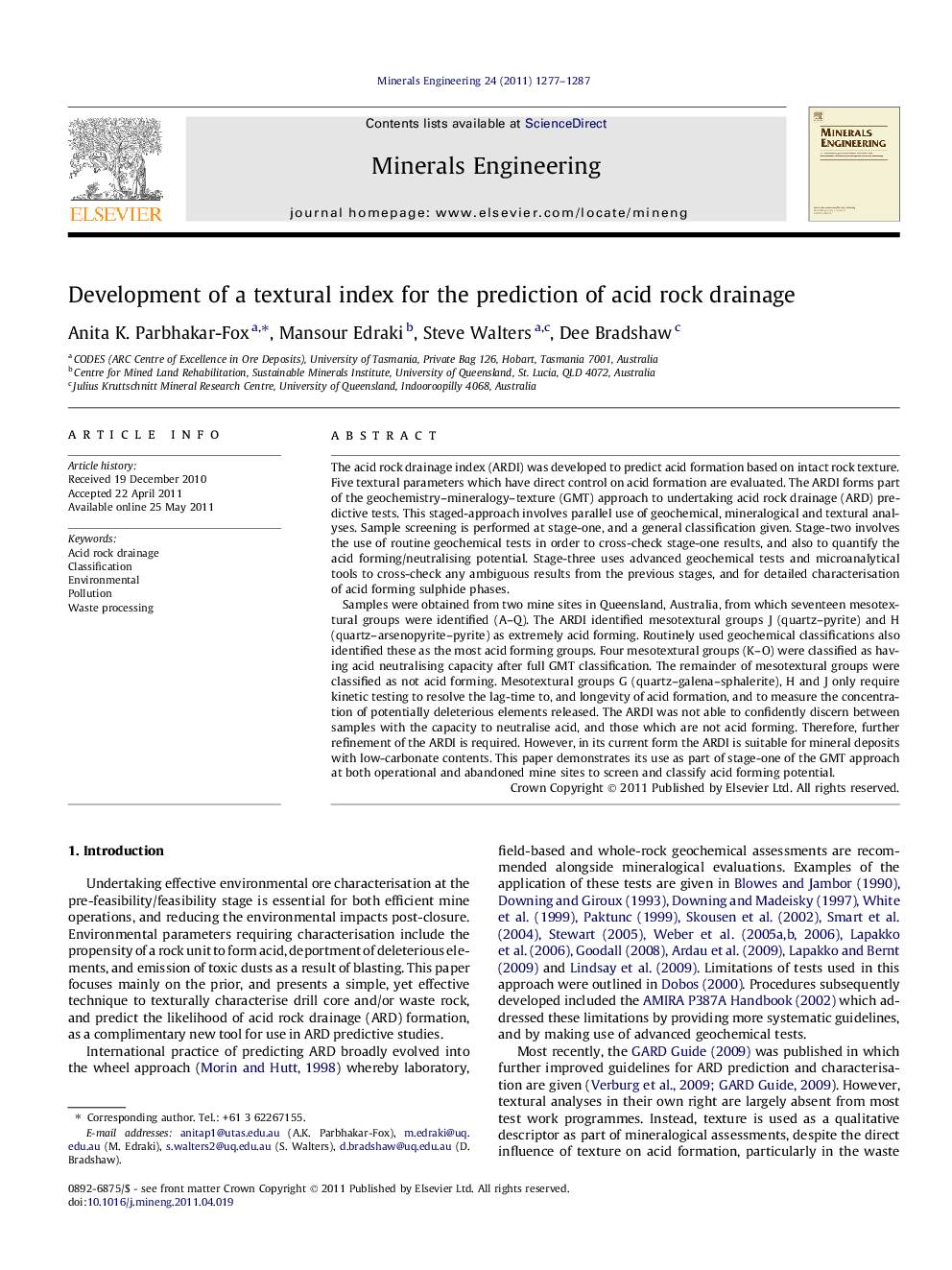| کد مقاله | کد نشریه | سال انتشار | مقاله انگلیسی | نسخه تمام متن |
|---|---|---|---|---|
| 233905 | 465373 | 2011 | 11 صفحه PDF | دانلود رایگان |

The acid rock drainage index (ARDI) was developed to predict acid formation based on intact rock texture. Five textural parameters which have direct control on acid formation are evaluated. The ARDI forms part of the geochemistry–mineralogy–texture (GMT) approach to undertaking acid rock drainage (ARD) predictive tests. This staged-approach involves parallel use of geochemical, mineralogical and textural analyses. Sample screening is performed at stage-one, and a general classification given. Stage-two involves the use of routine geochemical tests in order to cross-check stage-one results, and also to quantify the acid forming/neutralising potential. Stage-three uses advanced geochemical tests and microanalytical tools to cross-check any ambiguous results from the previous stages, and for detailed characterisation of acid forming sulphide phases.Samples were obtained from two mine sites in Queensland, Australia, from which seventeen mesotextural groups were identified (A–Q). The ARDI identified mesotextural groups J (quartz–pyrite) and H (quartz–arsenopyrite–pyrite) as extremely acid forming. Routinely used geochemical classifications also identified these as the most acid forming groups. Four mesotextural groups (K–O) were classified as having acid neutralising capacity after full GMT classification. The remainder of mesotextural groups were classified as not acid forming. Mesotextural groups G (quartz–galena–sphalerite), H and J only require kinetic testing to resolve the lag-time to, and longevity of acid formation, and to measure the concentration of potentially deleterious elements released. The ARDI was not able to confidently discern between samples with the capacity to neutralise acid, and those which are not acid forming. Therefore, further refinement of the ARDI is required. However, in its current form the ARDI is suitable for mineral deposits with low-carbonate contents. This paper demonstrates its use as part of stage-one of the GMT approach at both operational and abandoned mine sites to screen and classify acid forming potential.
► ARDI is a textural evaluation scheme which predicts acid formation.
► ARDI is part of an integrated GMT approach to predicting acid rock drainage.
► ARDI refined routine geochemical test classifications – particularly for UC samples.
► Further improvement to ARDI is required to discern between NAF and ANC samples.
Journal: Minerals Engineering - Volume 24, Issue 12, October 2011, Pages 1277–1287